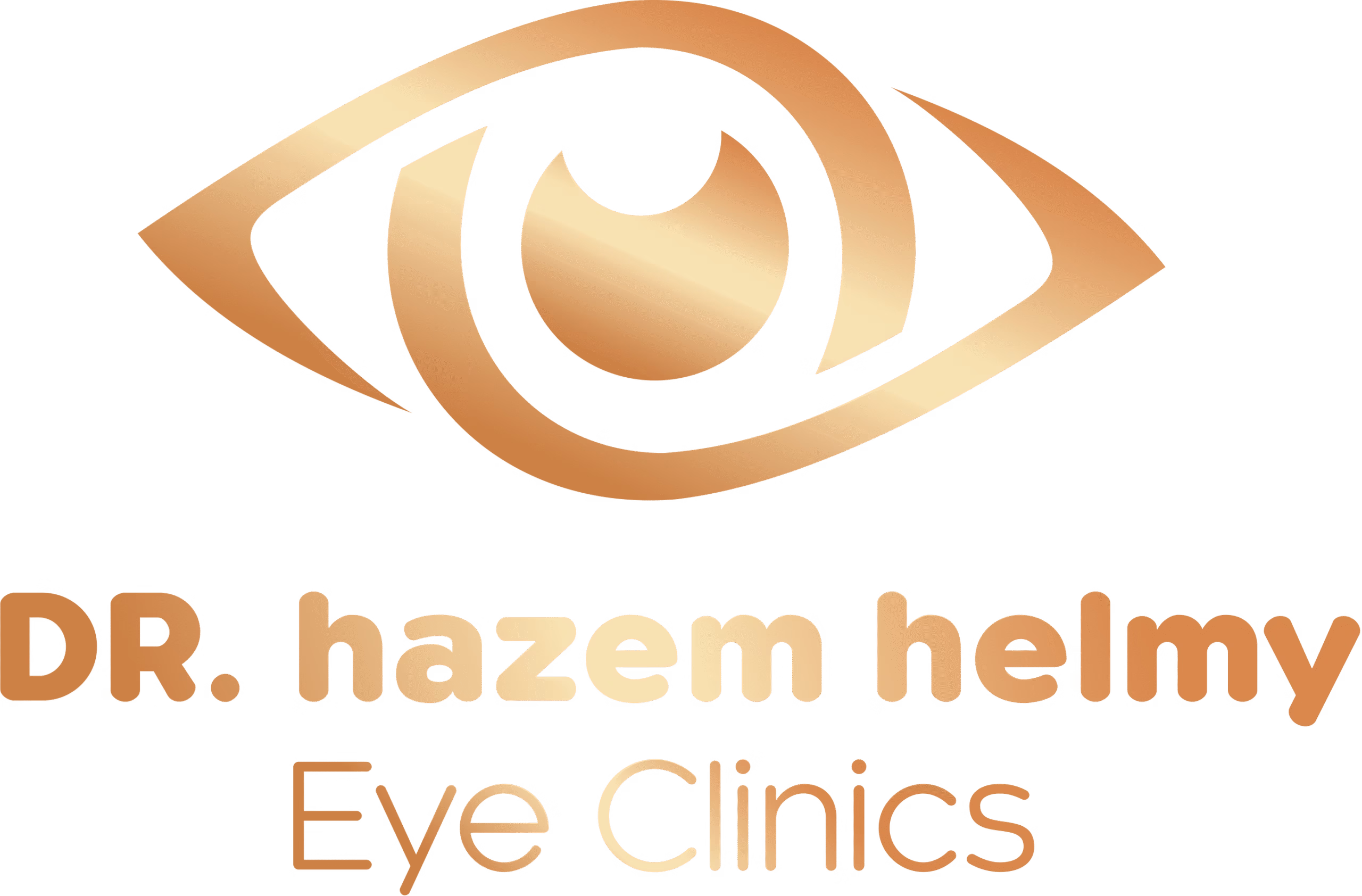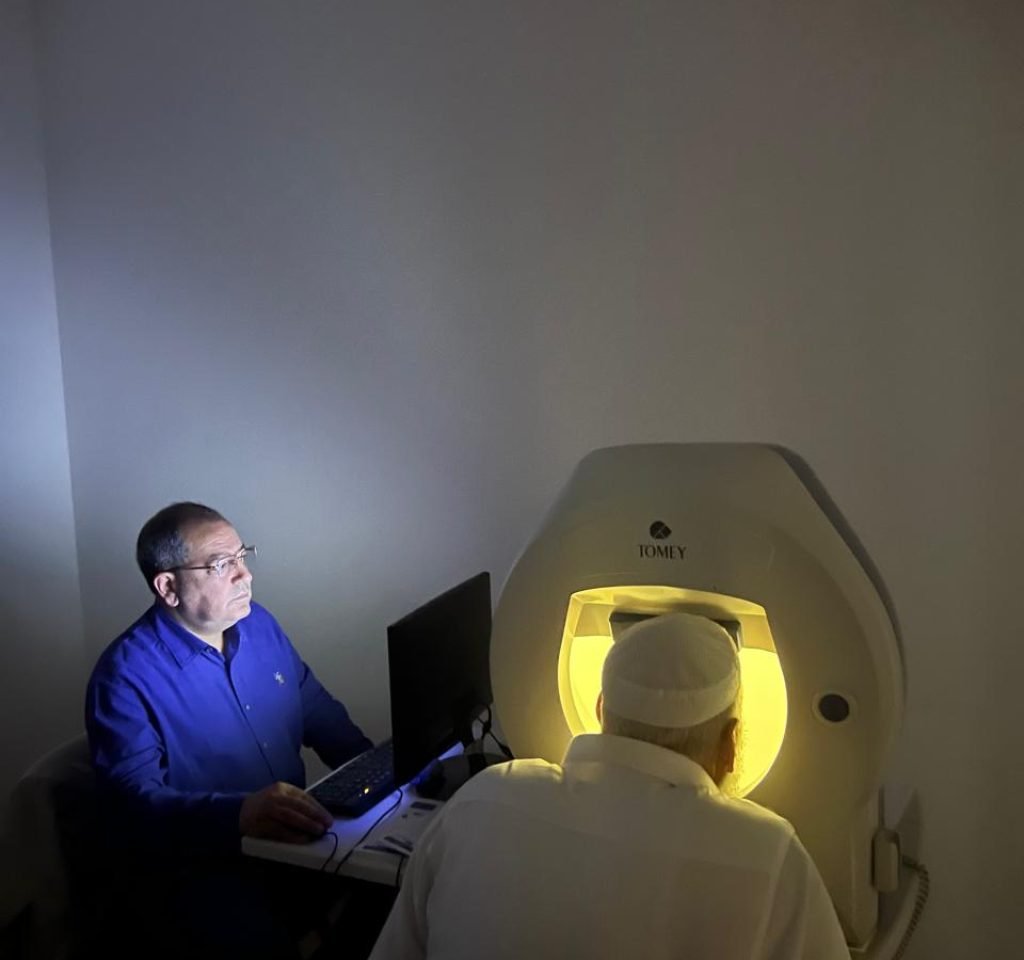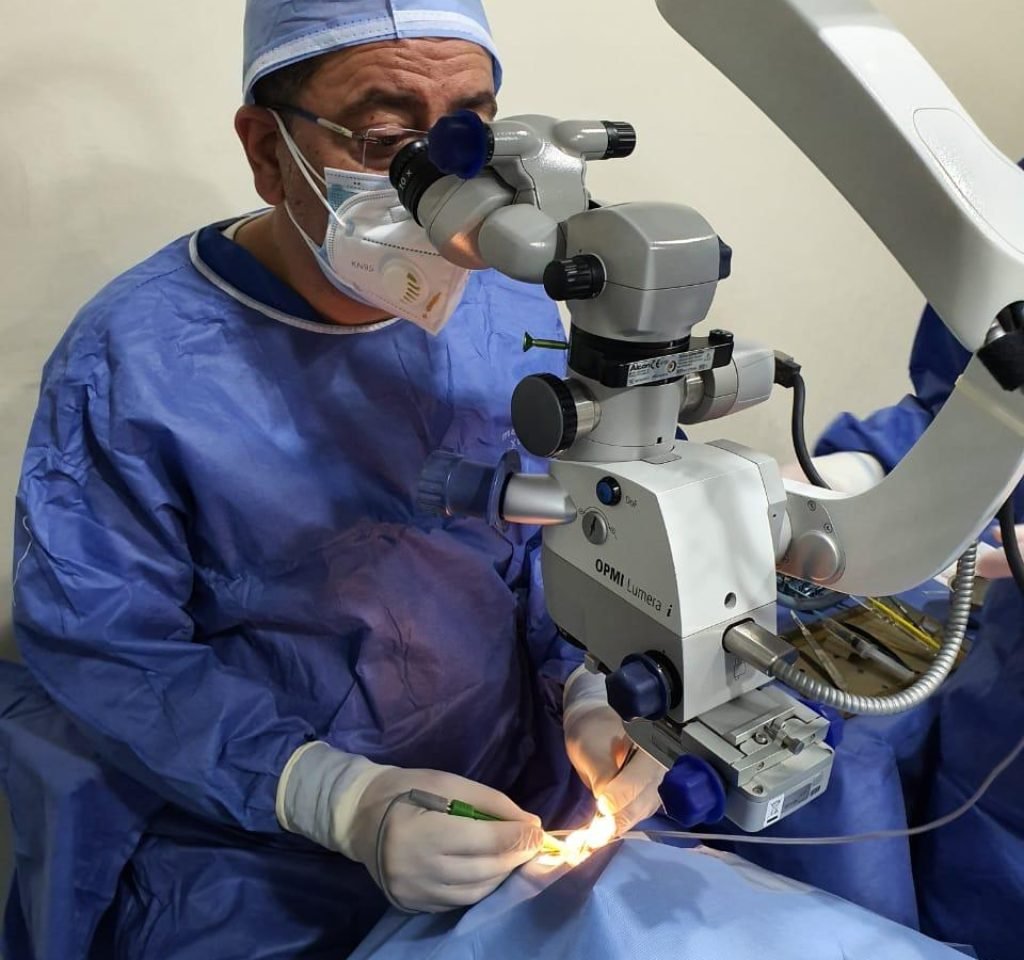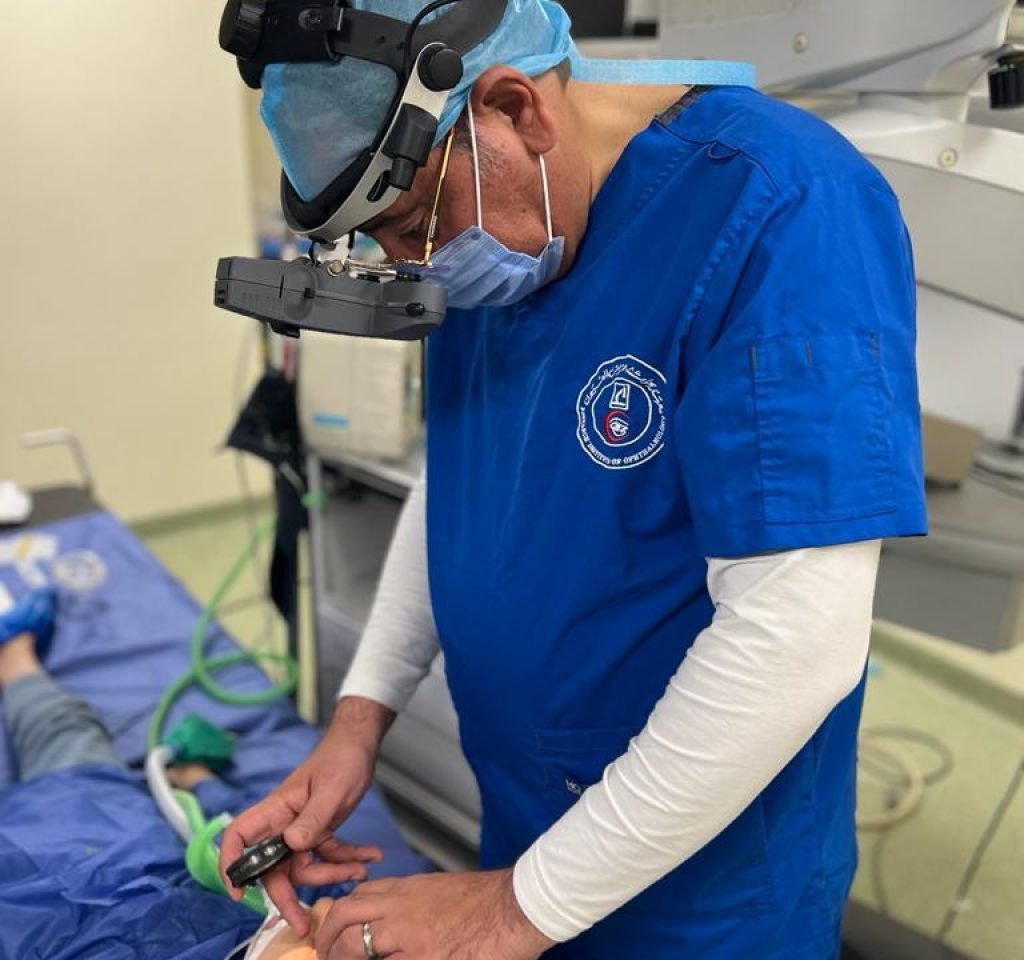
Treatment and surgery of glaucoma with cataracts and implantation of smart lenses
Treatment and surgery of glaucoma with cataracts and implantation of smart lenses
In some cases, the patient develops White water and blue water together, Which significantly affects the quality of vision and increases the risk of vision loss if proper therapeutic intervention is not carried out in a timely manner.
And with modern developments in ophthalmic surgery techniques, it has become possible Treat both conditions at the same time With Implantation of smart lenses It gives the patient a higher quality of vision and a decrease in dependence on glasses.
Treatment of glaucoma with cataracts and implantation of smart lenses are among the modern medical procedures aimed at comprehensively and integrally restoring vision. These surgeries are not just solutions for blurred vision caused by cataracts or high intraocular pressure causing glaucoma, but are a step towards enhancing the quality of life and improving a person's ability to perform daily activities effectively. In this article, we will discuss in detail every aspect of this process, starting with the familiarization with the relevant diseases, passing through the surgical procedures and techniques used, up to the postoperative results and recovery.
What is the difference between white and blue water
White water (Cataract):
DefinitionCataracts is a medical condition that occurs when proteins accumulate inside the eye's normal lens, darkening it and causing blurred vision.
Causes:
- Aging is the most common cause, as the lens is affected by natural changes with age.
- It can also result from eye injuries, chronic diseases such as diabetes, prolonged exposure to radiation or the use of certain medications such as corticosteroids.
Symptoms:
- Blurry vision.
- Difficulty with night vision.
- Unusual sensitivity to light.
- Watch the auras around the lights.
- The increasing need to change the glasses for eyesight.
Blue water (Glaucoma):
Definition: glaucoma is a group of diseases that affect the optic nerve due to increased intraocular pressure (Intraocular Pressure) or impaired outflow of fluid located inside the eye. If not treated, it may lead to permanent vision loss.
Causes:
- Blockage of the outflow of intraocular fluid, which leads to its accumulation and increased pressure.
- Genetic factors.
- Eye injuries.
- The use of certain medications such as corticosteroids.
Symptoms:
- Severe pain in the eye.
- See halos around the lights.
- Erosion of the field of vision.
- Gradual loss of lateral vision.
What are the causes of the occurrence of glaucoma and cataracts
The causes of the occurrence of glaucoma and cataracts vary depending on the type and nature of the disease.
Causes of the occurrence of glaucoma:
Glaucoma or what is known as glaucoma is a disease that causes damage to the nerve of the eye as a result of the high pressure of the fluid inside it. The reasons can be multiple, including:
– Advancing ageThe risk of glaucoma is increased in white people over the age of 60, people with dark skin, African origins, and those with a genetic predisposition over the age of 40.
– Diabetes or other underlying health conditions Such high blood pressure may increase the risk of developing glaucoma.
– Acute or chemical injury to the eye, Severe eye infection, blockage of blood vessels inside the eye, or inflammatory conditions may also be among the leading causes of glaucoma.
– If the corners of the drainage of fluid in the eye are closed due to the protrusion of the iris, This can lead to partial or complete blockage of the drainage of intraocular fluid, which increases the pressure and leads to glaucoma .
How are the two conditions treated together
Dr. Hazem Helmy offers a precise protocol for the treatment of blue and white water together in One integrated procedure Includes:
1. Removal of cataracts using ultrasound technology (phaco)
The opaque lens is removed safely and accurately.
The operation is performed through a very small opening without suturing.
2. Adjusting intraocular pressure during the same surgery
The drainage angle of the eye is widened or adjusted to reduce pressure.
In some cases, techniques are used MIGS (micro glaucoma surgeries) Or precise drainage instruments depending on the patient's condition.
3. Implantation of smart lenses
An advanced artificial lens is implanted in place of the natural lens.
Smart lenses allow Clear vision for far and near distances.
Reduces the need to use glasses after the procedure.
Prevention of glaucoma:
- Periodic eye examinationsIt is very important to have periodic eye examinations to detect any increase in intraocular pressure, especially for individuals with a family history of glaucoma or suffering from diseases such as diabetes.
- Avoid long-term use of corticosteroid drugs: Especially eye drops containing corticosteroids, as they can lead to an increased risk of glaucoma if used for long periods.
- Eye protection from injuriesAs with cataracts, the use of protective glasses during activities that may endanger the eyes can help prevent glaucoma .
- Intraocular pressure monitoringFor individuals who are in the high risk group (such as those with a family history of glaucoma), regularly monitoring intraocular pressure levels can help prevent the development of the disease.
In both cases, it is important to adopt a healthy lifestyle that includes eating a balanced diet, exercising regularly, reducing stress, in addition to visiting the ophthalmologist periodically to ensure eye health and consult a doctor about any observed changes in vision or eye health.
2. The relationship between white water and blue water
In some cases, cataracts and glaucoma can appear together in the same patient, especially among the elderly or people with chronic diseases such as diabetes. Diagnosis of these conditions requires careful examinations using advanced techniques such as intraocular pressure measurement (tonometry), optic nerve imaging, and visual field testing.
Combined treatment of these conditions may be more complicated, as the doctor needs to draw up a treatment plan that takes into account both conditions. In some cases, cataract treatment can only improve the outflow of intraocular fluid and relieve its pressure, which helps in the treatment of glaucoma as well. However, two separate surgeries may need to be performed if the glaucoma condition is severe or does not respond to initial treatment.
Implantation of smart lenses
A. What are smart lenses
Smart lenses are a new type of industrial lenses that are designed to provide clear vision at various distances (close, medium, far). These lenses are characterized by their ability to adapt to the individual needs of the patient, which makes them the ideal choice for those who want to get rid of glasses or contact lenses.
- Types of smart lenses:
– Multifocal lenses (Multifocal Lenses): provides clear vision at all distances.
– Adaptable lenses (Accommodative Lenses): simulates the action of a natural lens and allows focusing on different objects.
– Special correction lenses (Toric Lenses): تعالج الاستجماتيزم (Astigmatism).
P. How smart lenses work:
After removing the cataract-infected natural lens, the Smart Lens is implanted in its place using precise techniques. Laser technology is used in many cases to ensure high accuracy during the procedure, which reduces the time required for healing and improves the results.
C. Benefits:
- Restore full vision without the need for glasses or contact lenses.
- Improve the quality of daily life by providing clear visibility at all distances.
- Reduce the need for additional operations in the future.
4. Combined surgical procedures
A. The process of removing cataracts:
Cataract removal is one of the most common and safest surgical procedures. Follow the following steps:
- Eye anesthesia: The eye is anesthetized using topical drops or a topical injection syringe as needed.
- Make a small incision: The surgeon makes a small incision in the cornea to remove the diseased lens.
- Lens removal: Femto-laser or ultrasound technology is used to atomize and remove the diseased lens.
- Smart lens implantation: The Smart Lens is implanted in the place of the removed natural lens.
P. Treatment of glaucoma:
Treatment of glaucoma depends on the severity of the condition and the degree of progression of the disease. Therapeutic options include:
– The use of topical drops: To reduce the production of intraocular fluid or improve its drainage.
– Lasers: Such as Trabeculoplasty, which is used to stimulate better fluid drainage.
– Surgical interventionSuch as piercing or non-penetrating glaucoma surgeries or Valve implants to drain aqueous fluid inside or outside the eye, depending on the type of operation
C. Combining the two processes:
In some cases, cataract removal and glaucoma treatment can be performed together during the same surgical session. This approach saves time for the patient and reduces the need for frequent visits to the hospital.
5. Modern technologies used
A. Femto-laser:
Femto-laser technology is one of the latest technologies used in the removal of the diseased lens and implantation of the smart lens. This technique provides high accuracy and more predictable results compared to traditional methods.
P. Three-dimensional imaging:
Three-dimensional imaging is used to accurately assess and plan the condition of the eye before surgery. This helps the surgeon to choose the best type of smart lenses for each patient based on his individual condition.
6. Results of surgical operations
A. Results of cataract treatment:
Most patients notice a significant improvement in vision after the operation, with a success rate of more than 90%. The patient can restore clear vision and enjoy a more accessible everyday life.
P. Results of glaucoma treatment:
Glaucoma treatment is aimed at improving the outflow of intraocular fluid and reducing pressure on the optic nerve. The results include stopping the progression of vision loss and improving quality of life.
C. Results of smart lens implantation:
Smart lens implants give patients clear vision at all distances, which enhances their self-confidence and their ability to perform daily activities without the need for glasses or contact lenses.
Who is suitable for this type of surgery
This combined surgery is particularly suitable for:
Patients suffering from Impaired vision due to cataracts
Glaucoma patients who need Surgically adjust intraocular pressure
Patients wishing to get rid of glasses or reduce dependence on them
Those who suffer from Impaired vision at more than a distance (near and far)
What other treatment options are available to treat glaucoma and cataracts
Treatment of glaucoma and cataracts depends on the patient's condition and the severity of the disease, there are several treatment options available for each. Let's start with blue water:
Treatment of glaucoma:
- Eye drops: the first option is usually for the treatment of glaucoma, as these drops help to lower intraocular pressure by reducing the production of intraocular fluid or increasing its drainage.
– MedicinesThey can be used if the drops are not enough to lower the pressure inside the eye.
– Laser treatment: Effective, fast and can be used to relieve intraocular pressure, the patient may need multiple sessions. This type of treatment includes operations such as purple laser or selective laser for trabeculectomy.
– Surgery: If other methods do not work, surgery comes as an effective solution, such as penetrating blue water surgeries, non-penetrating blue water surgeries ( non-penetrating), implantation of stents, pipes and valves to improve the drainage of aqueous fluid.
Cataract treatment:
– Drug therapy and conservationIn early cases of cataracts, doctors may recommend some conservative measures such as using new glasses or contact lenses to temporarily improve vision until the need for surgery becomes necessary.
- AFor surgeryCataract removal surgery is the most common solution when the condition becomes more advanced. This surgery involves removing the damaged lens, replacing it and an artificial lens (inseam lens) to improve vision. In some cases, cataract surgery is combined with lens implantation to correct other vision problems.
Treatment options vary based on the type of disease and the extent of its development, and sometimes more than one method of treating both blue water and white water can be combined to achieve the best results.
Do you have poor vision and a diagnosis of white or blue water
Start treatment with Professor Dr Hazem my dream Using the latest international technologies in eye surgery, smart lenses will give you clearer vision and a more comfortable life.
Frequently asked questions
The latest technologies used in the treatment of cataracts and glaucoma rely heavily on improving accuracy and reducing the risks associated with conventional surgeries. The following are the most prominent of these technologies:
- 1. Cataract treatment:
- Femto-laser (Femtosecond Laser): femtosecond laser technology is used to create a small hole in the cornea, and then the blurry lens is atomized using high-precision laser beams before being sucked and removed. This method is considered among the most accurate and safe compared to traditional methods.
- Phaco apparatus (Phacoemulsification): this technique is based on ultrasound to break up the cataract lens and remove it through a very small incision (about 2-3 millimeters), which helps to speed up the recovery process and reduce complications.
- Smart lensesAfter removal of the affected lens, advanced artificial lenses such as multifocal Lenses (Multifocal Lenses) or adaptive lenses (Accommodative Lenses) are implanted, which provide clear vision at various distances (close, medium, far).
- Treatment of glaucoma:
- Precision dual-pulse laser (Micropulse Diode Laser): This device is one of the latest means used in the treatment of glaucoma, as it improves the drainage of intraocular fluid without the need for major surgery, which helps to effectively reduce intraocular pressure .
- Technical Trabeculoplasty: This technique uses a laser to stimulate the drainage of intraocular fluid, which is a quick and effective way to relieve pressure on the optic nerve.
- Liquid drainage surgery (Trabeculectomy): In severe cases that do not respond to laser therapy or medications, surgery is performed to drain the intraocular fluid to permanently relieve pressure.
- Implanted liquid drainage devices (Glaucoma Drainage Devices): Small devices are implanted inside the eye to improve fluid drainage and reduce pressure continuously or valves are implanted to improve the drainage of aqueous fluid outside the eye Future directions:
- Clinical trials are underway to test new technologies such as the use of stem cells or gene therapy for the treatment of glaucoma and cataracts, which may provide more effective solutions in the future.
From the above, modern technologies such as Femto-laser, phaco, and MicroPulse diode laser are among the latest means used to treat cataracts and glaucoma. These techniques are aimed at improving the results of surgical operations, reducing risks and complications, leading to a faster recovery and better restoration of vision.
The latest studies on the use of stem cells in the treatment of eye diseases indicate the presence of promising prospects in the restoration of eyesight and the treatment of degenerative conditions that were considered incurable in the past. The following are the most notable recent results and trends:
- The use of stem cells for the treatment of degenerative diseases of the retina:
- Clinical trials using induced pluripotent stem cells (iPSCs) in the treatment of diseases such as age-related macular degeneration (AMD) and diabetic retinopathy have been declared successful .
- This technique is based on stimulating stem cells to produce new cells that can replace damaged cells in the retina, which leads to the restoration of visual function.
- Stem cell injections for tissue regeneration:
- Recent studies have shown that intraocular stem cell injections can help regenerate damaged tissues, especially in cases of loss of pigment epithelial cells or retinal neurons.
- This technique is aimed at preventing the progression of the disease and stimulating the natural healing process.
- Treatment of cataracts using stem cells:
- Scientists have removed cataract-infected lenses and used stem cells naturally present in the eye to stimulate the production of a healthy new lens.
- This method is considered a revolution in the field of cataract surgery, as it reduces the need for implantation of artificial lenses.
- 4. The use of stem cells for the treatment of glaucoma:
- There are experiments that suggest that stem cells may be effective in repairing damaged tissue in the optic nerve caused by glaucoma.
- These cells reduce intraocular pressure and improve fluid drainage, which contributes to the preservation of vision.
- Future research:
- The use of gene therapy techniques with stem cells is now being explored for the treatment of hereditary eye diseases such as nocturnal retinopathy and macular degeneration of the retina.
- These hybrid techniques aim to address the root cause of the disease rather than just managing the symptoms.
- Promising results from clinical trials:
- Clinical trials conducted in Turkey and other places showed that stem cell transplantation was safe and effective in the treatment of many degenerative diseases of the eye.
- No serious side effects have been reported so far, which makes this treatment promising for the future of Ophthalmology.


To communicate
Book now
Do you have vision problems or need an eye exam Book your appointment now with the best ophthalmologists! We provide you with high-quality medical services in a comfortable and safe environment
Working hours
- The gathering clinic: on Sundays and Tuesdays from 2 to 9 pm
- Giza clinic: Saturday, Monday and Wednesday from 5 to 11 pm


